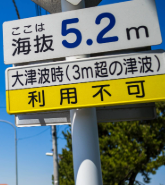The tactics of warfare are learned on the latest field of battle. The same is true for the management of pandemics, where defensive measures require the full engagement of the state.
Outside of Africa, the last deadly epidemic in 2003 was caused by another coronavirus: SARS (severe acute respiratory syndrome). SARS brought a “partial pandemic,” as the outbreak was largely restricted to some cities in China and a few neighboring countries. However, for the cities in the front line this was the real thing, requiring the mobilization of significant resources around contact tracing and reconfiguring hospitals to isolate patients. These countries and cities did not quickly forget the SARS experience.
In his prophetic PhD dissertation on quarantine in 2012, Florida lawyer Peter Okin wrote:
“SARS is not really gone – merely quiescent at this time in its animal reservoirs, ready to return to the human world whenever the right combination of natural factors and human sloppiness enable it to do so.
Then, there would be no ‘high-tech,’ 21st-century defenses against it –just the ancient social-distancing methods that go back thousands of years (with a few simple refinements). In 2003, these antique public health weapons may have helped save the world from SARS – and they may also have to become mankind’s first-line response to a return of this contagion in the future.”
Once the spread of the SARS virus halted, research funding stopped. No one saw any legacy of risk. No therapies were approved, no vaccines tested.
Ancient Methods for a New Outbreak
When a new variant of the SARS coronavirus emerged in Wuhan, China, in December 2019 – as Okin had predicted – for most countries only “ancient” weapons dating back hundreds of years were available to manage the risk: containment, quarantine, social distancing and protective sequestration.
Those countries and cities with experience managing SARS in 2003 knew how to coordinate their strategies. SARS was halted by rigorous public health interventions, isolating cases, quarantining their contacts and applying barrier-nursing practices. The most infectious individuals were quite ill in a distinctive way. The average death rate for those infected was as high as 14 percent.
The original, tentative response from Wuhan likely happened because it was not a “SARS city.”
In January 2020, Taiwan had a week’s warning that COVID-19 would reach the island. The government implemented strong border controls and travel restrictions before the first case arrived. They reinstalled SARS-related active surveillance and screening systems such as passenger thermal imaging at all airports and ports. The national health insurance database was integrated with the immigration and customs database and included the previous two weeks of travel. The system was also extended to foreign visitors.
Artificial intelligence (AI), data analytics and digital communications were used to track the virus. Those who had been in high-risk areas were quarantined and kept in place through geofencing with government mobile phones. The number of new daily cases in Taiwan never rose above 20 and was then driven down again.
South Korea had one further advantage over its neighbors. In 2015, it was the only country to suffer a human-to-human transmission outbreak of MERS (Middle East Respiratory Syndrome). The public health agency already knew the importance of large-scale testing alongside contact tracing. At the beginning of February 2020, the country signed contracts with local biotech companies to develop testing capabilities. By the third week in March, 20,000 tests were being performed every day with results processed at a hundred laboratories. South Korea pioneered drive-thru and walk-thru test centers. In February, new daily cases rose to almost a thousand, but public health agencies did not give up on case tracing and succeeded in bringing the numbers down again.
For countries in Europe, as well as the U.S., the last experience of a significant pandemic was an influenza outbreak in 1957. A viral epidemic with rapid exponential growth in cases will overwhelm – unless, from the start, a country makes a dramatic investment in testing and monitoring capabilities. With the notable exception of Germany, European countries were not heeding lessons learned by Asian countries. The U.K. started out with effective case tracing, but insufficient testing capability made it difficult to continue as the number of cases doubled every four or five days.
Chastened by the level of life loss in their initial phase of social distancing, Western governments have shown more interest in learning from Asia how to relax social distancing while restoring their economies.
To do this will require pursuit and coordination of three sets of activities:
- First, reestablishing comprehensive contact tracing, testing, quarantine and containment to both identify and isolate sources of infection
- Second, predicting what additional sources of human contact and inferred viral transmission are associated with each economic or social sector (e.g., primary education or manufacturing) before that sector is switched on again (Forty Days to Save the World)
- Third, measuring the real-time COVID-19 transmission rate, rather than waiting three weeks to discover the latest numbers seeking hospitalization.
Modern Tech for a Modern Pandemic
All of these initiatives take advantage of the extensive use of smartphones (and, in cities, charge cards). These devices offer opportunities to monitor human contact at both the macro and individual level. Modern tech is allowing us to finally bring pandemic management into the 21st century.
To measure the real-time transmission rate, we need to frequently test a large cohort of people every week, or even every day, to find how the overall rate of infections is changing and whether the crucial Rt (rate of transmission) value is being sustained at 1.0 or lower. Since early February, the School of Public Health at the University of Hong Kong has been estimating the real-time Rt for Hong Kong, adjusting the time lag from new infection to case reporting. We need to become familiar with the COVID-19 Rt, just as we know the pollen count or the chance of rain.
In terms of contact tracing, smartphones can be programmed with an app to exchange Bluetooth signals with nearby phones (9-meter range) and record all contact over several days. However, challenges exist concerning discrimination based on assumed proximity and duration – what degree of contact is significant enough to suspect accompanying viral transmission? Signal strength could be attenuated by intervening bodies. Someone might be identified as a contact while protected beyond an intervening wall. Multiple phones in the vicinity have the potential to cause confusion. There’s a clear danger of creating false positives, identifying far too many people to be at risk – each of whom would have to go into quarantine unless they can be rapidly tested.
Then there is the question of where the contact data is held, whether on each phone, as proposed in the Apple/Google initiative, or in a central server, as preferred by the U.K. government, which wants to use this information to measure and map human contact.
Surveillance will be vindicated as critical to managing the pandemic. One recent study showed that rapid AI-driven contact tracing, through an app on all cellphones, could bring the Rt value down below 1. However, to work this will require large-scale voluntary uptake of the national “contacts app.” People will need to be convinced that adopting their national app, and sharing location and contact data, will be saving lives and front-line medical personnel.
The ancient practice of social distancing is a blunt weapon, with drastic economic and social side effects. There has to be a far more nuanced way to reduce human contact while also sustaining economic activity. Imagine that through your phone you are alerted to the proximity of anyone whose current infection-free status is uncertain. People can then become the active agent of their shielding. Imagine contact tracing is so effective that 80 percent of related cases are identified and quarantined. Meanwhile, we could focus on that daily Rt value to steer policy around whether more or less distancing is in order.







